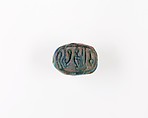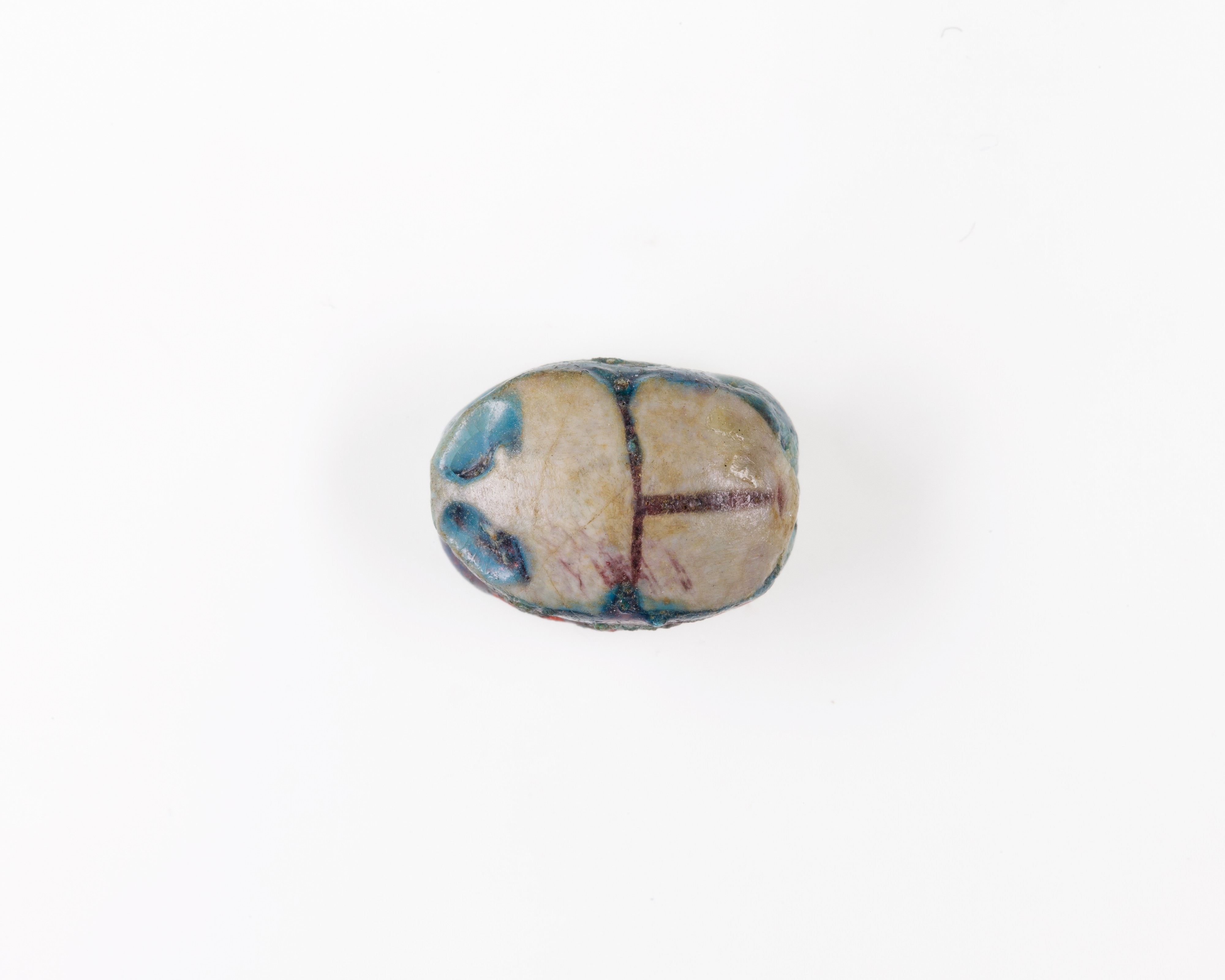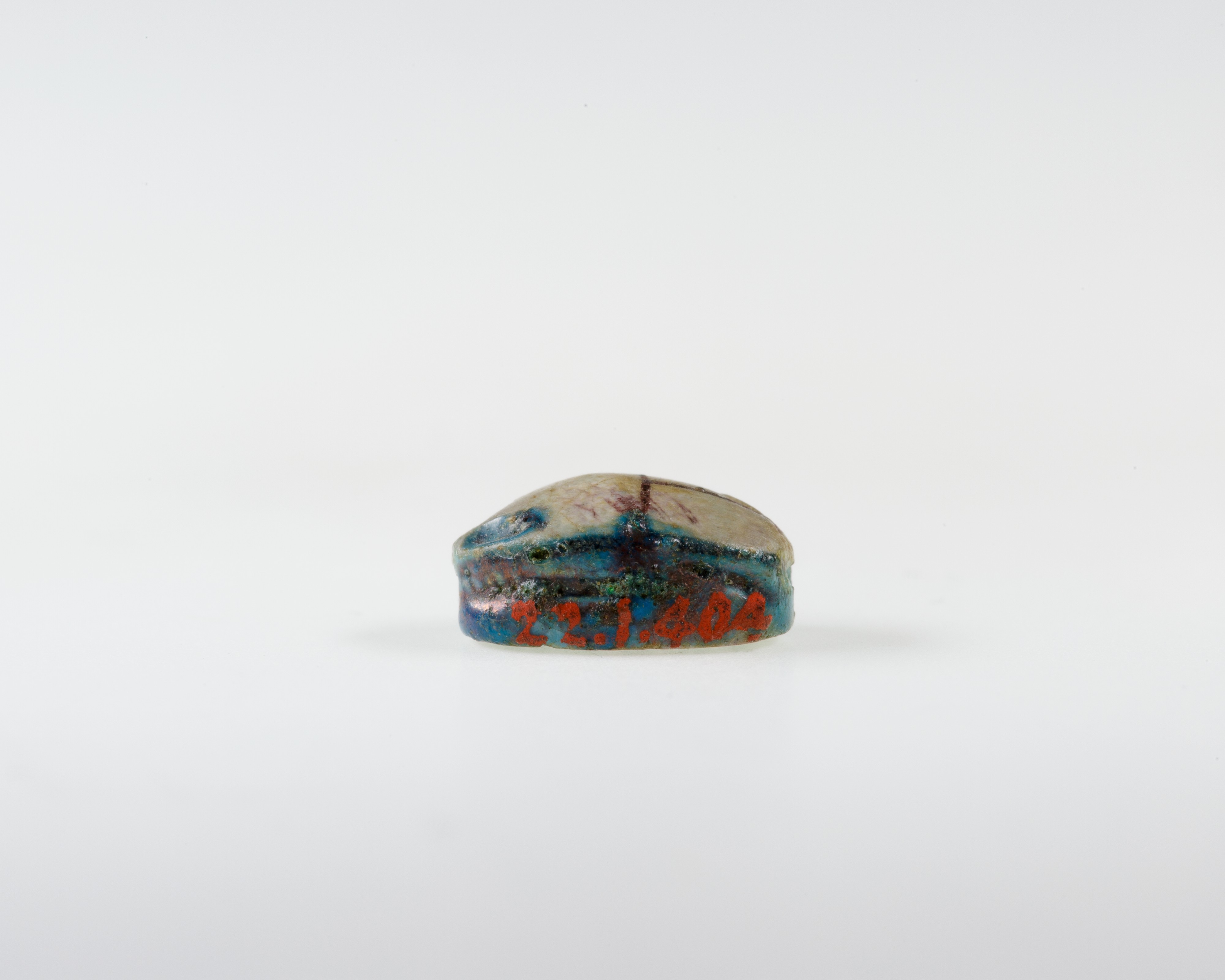Scarab Inscribed with Hieroglyphs
Middle Kingdom
This late Middle Kingdom scarab is incised with three hieroglyphs: the wedjat-eye, symbol for health and well-being, the Red Crown of Lower Egypt, symbolizing royal authority, and the hieroglyph for good and beautiful (nfr). These signs are not meant to form words but are chosen for their positive, protective meaning. The details on the scarab's back and sides indicate that it dates to mid to late Dynasty 13 (ca. 1750 –1640 B.C.) and that it may have been carved at a workshop in present-day Tell el-Dab'a (ancient Avaris).
Due to rights restrictions, this image cannot be enlarged, viewed at full screen, or downloaded.
This artwork is meant to be viewed from right to left. Scroll left to view more.





